(U. S. vs. Price et al.)

It was an old-fashioned lynching, carried out with the help of county officials, that came to symbolize hardcore resistance to integration. Dead were three civil rights workers, Michael Schwerner, Andrew Goodman, and James Chaney. All three shot in the dark of night on a lonely road in Neshoba County, Mississippi. Many people predicted such a tragedy when the Mississippi Summer Project, an effort that would bring hundreds of college-age volunteers to "the most totalitarian state in the country" was announced in April, 1964. The FBI's all-out search for the conspirators who killed the three young men, depicted in the movie "Mississippi Burning", was successful, leading three years later to a trial in the courtroom of one of America's most determined segregationist judges.
Sam Bowers, the Imperial Wizard of the White Knights of the Klu Klux Klan of Mississippi, sent word in May, 1964 to the Klansmen of Lauderdale and Neshoba counties that it was time to "activate Plan 4." Plan 4 provided for "the elimination" of the despised civil rights activist Michael Schwerner, who the Klan called "Goatee" or "Jew-Boy." Schwerner, the first white civil rights worker based outside of the capital of Jackson, had earned the enmity of the Klan by organizing a black boycott of a white-owned business and aggressively trying to register blacks in and around Meridian to vote.
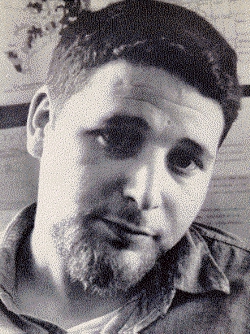
Michael Schwerner
The Klan's first attempt to eliminate Schwerner came on June 16, 1964 in the rural Neshoba County community of Longdale [LINK TO MAP]. Schwerner had visited Longdale on Memorial Day to ask permission of the black congregation at Mount Zion Church to use their church as the site of a "Freedom School." The Klan knew of Schwerner's Memorial Day visit to Longdale and expected him to return for a business meeting held at the church on the evening of June 16. About 10 p.m., when the Mount Zion meeting broke up, seven black men and three black women left the building to discover thirty men lined up in military fashion with rifles and shotguns. More men were gathered at the rear of the church. Frustrated when their search for "Jew-Boy" was unsuccessful, some of the Klan members began beating the departing blacks. Ten gallons of gasoline were removed from one of the Klan members' cars and spread around the inside of the church. Mount Zion Church was soon engulfed in flames.

James Chaney
News of the beatings and fire reached Michael Schwerner in Oxford, Ohio. Schwerner and his twenty-one-year-old chief aide, a native black Meridian named James Chaney, were in Ohio to attend a three-day program sponsored by the National Council of Churches to train recruits for the Mississippi Summer Project. Among those being trained for a summer of work aimed at improving the lives of black Mississippians was a Queens College student named Andrew Goodman , who Schwerner convinced to come to Meridian. Anxious to get back to Mississippi to learn what they could about the disturbing events in Longdale, Schwerner, Chaney, and the newly-recruited Goodman loaded into a blue CORE-owned Ford station wagon in the early morning hours of June 20 for long trip back to Meridian. The next day, after a short night's sleep and a breakfast in Meridian, the three civil rights workers were again in the CORE wagon heading northwest towards Longdale.
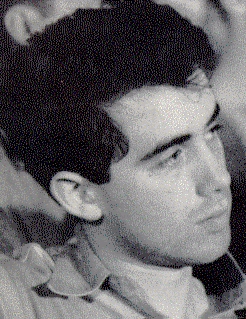
Andrew Goodman
Longdale, in Neshoba County, was known as a high-risk area for civil rights workers. Lawrence Rainey, Neshoba County Sheriff, and his deputy, Cecil Price, were both members of the Klan. Although their Klan membership was not generally known, both had reputations as being tough on blacks. Rainey had been elected sheriff the previous November after campaigning as "the man who can cope with situations that might arise." In Neshoba County, it was well understood that the "situations" Rainey referred to meant meddlesome interference by outsiders with Mississippi's state-enforced policy of segregation. Schwerner told Meridian CORE worker Sue Brown that they should be back in the CORE office in Meridian by 4:00. If they weren't back by 4:30, she should start making phone calls.
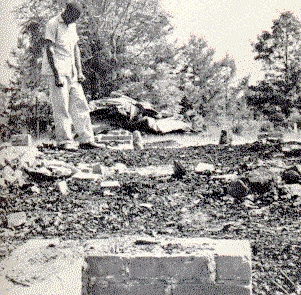
Ruins of Mount Zion Methodist Church
Schwerner, Chaney, and Goodman began their Midsummer's Day visit to Neshoba County with an inspection of the burned out remains of Mount Zion Church. They then visited the homes of four black members of the congregation to learn more about the incident. At one of the homes, the three civil rights workers were warned that a group of white men were looking for them. About 3 p.m., the trio was ready to head back to the relative safety of their Meridian office. There were two possible routes to Meridian. The most direct route was the road they had come up, Highway 491, a narrow clay road intersected by numerous dirt roads. An ambush would be easy on 491. The other, less direct route, was a black-topped Highway 16, which would take them west through Philadelphia, the county seat. Chaney turned onto Highway 16.
Deputy Sheriff Price was at that time heading east on Highway 16. A few miles outside of Philadephia, Price spotted the well-known CORE wagon heading in his direction. Schwerner and Goodman most likely were crouched low in their seats, allowing Price to see only the black driver, James Chaney. Price shouted over his radio, "I've got a good one! George Raymond!" (Raymond was a black civil rights leader hated by Klan throughout Mississippi.) Price did a quick U-turn and headed back after his quarry. Chaney pulled the CORE wagon over to the side of the road just inside the Philadelphia city limits. Price arrested Schwerner, Goodman, and Chaney, allegedly for suspicion of having been involved in the church arson, and deposited the three in the Neshoba County jail. Soon thereafter he met with the Neshoba County Klan kleagle, or recruiter, Edgar Ray Killen to tell him of his exciting catch and to plan the deadly conspiracy that would unfold later that night.
Some of what happened over the next seven hours in the Neshoba County jail is known. We know that Schwerner asked to make a phone call, but his request was denied. If he wasn't concerned about his physical well-being before that time, he would have been then. We also know that a call was made to the jail at 5:20 in the afternoon asking whether anyone there had information concerning the whereabouts of the three overdue civil rights workers. We know also that the jailer who answered the call, Minnie Herring, lied. We know that shortly after 10:00 P.M. Cecil Price showed up at the jail, telling the jailer, "Chaney wants to pay off-- we'll let him pay off and release them all." Price led them to their parked car, then tailed them as they headed east out of town on Highway 19.
The three civil rights workers by then no doubt suspected that they were being led into a trap, and in fact they were. Since receiving word from Price that Schwerner had been captured, Edgar Ray Killen, the Klan kleagle and an ordained Baptist minister, had been busy recruiting members of the Neshoba and Lauderdale County klaverns for some "butt ripping," as he put it. An afternoon meeting at the Longhorn Drive-In in Meridian with local Klan bigwigs was followed by a later meeting at Akin's Mobile Homes with eager, younger members who would participate in the actual killings. Killen told the dozen or more recruits to buy rubber gloves and to be in Philadelphia by 8:15 P. M. After offering the Klan men a drive-by tour of the Neshoba County jail and going over the details of the planned release, Killen headed off to see a departed uncle at the local funeral home and to thereby establish his alibi.
After following the CORE station wagon out of town, Price returned to Philadelphia to drop off an accompanying Philadelphia police officer, then raced back onto Highway 19 in pursuit of the three civil rights workers. Meanwhile, two other cars filled with young Klan members were also speeding down with the same object in mind. Price's souped-up Chevy saw the CORE wagon come into view less than ten miles from the county line. Chaney decided to run for it, and a high speed chase ensued. Chaney swerved quickly onto Highway 492, but Price made the turn as well. Seconds later, for reasons unknown, Chaney braked his car and the three surrendered.
According to James Jordan, a Klan member who would later become a key FBI informant, Price said, "I thought you were going back to Meridian if we let you out of jail?" When Chaney said that's where they were headed, Price said, "You sure were taking the long way around. Get out of the car." The three were placed in Deputy Price's car. Soon three cars, Price's and two full of Klan members, were traveling in a procession down an unmarked dirt turnoff called Rock Cut Road.
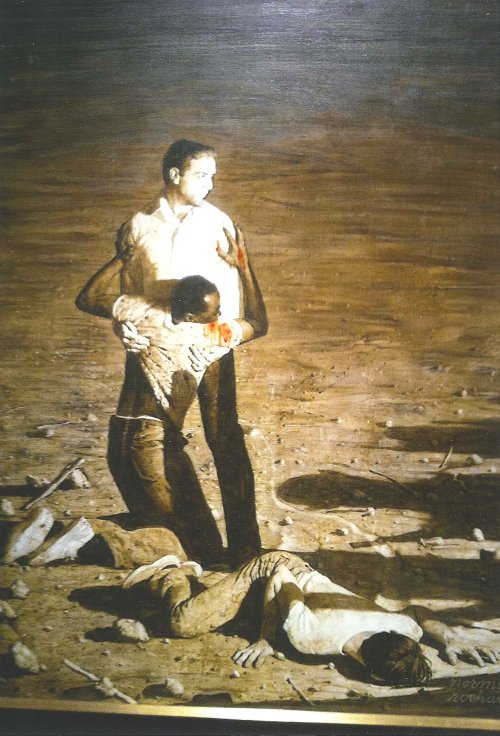
Norman Rockwell painting depicting the murders off Rock Cut Road
It is not known whether the three were beaten before they were killed. Klan informants deny that they were, but there is some physical evidence to the contrary—especially for Chaney. What is known is that a twenty-six-year-old dishonorably discharged ex-Marine, Wayne Roberts, was the trigger man. Roberts shot Schwerner first, then Goodman, both at point blank range. James Jordan shouted, “Save one for me!” and shot Chaney in the stomach. Roberts fired a final bullet into Chaney's head. (FBI informant James Jordan, according to a second informant present at the killings, Doyle Barnette, also fired two shots at Chaney.)
The bodies of the three civil rights workers were taken to a dam site at the 253-acre Old Jolly Farm. The farm was owned by Philadelphia businessman Olen Burrage who reportedly had announced at a Klan meeting when the impending arrival in Mississippi of an army of civil rights workers was discussed, "Hell, I've got a dam that'll hold a hundred of them." The bodies were placed together in a hollow at the dam site and then covered with tons of dirt by a Caterpillar D-4.
While the bodies were being buried, Price had returned to his duties in Philadelphia. Around 12:30 A. M., Price met with Sheriff Rainey. Given their Klan membership and the close relationship between the two, it is almost unimaginable that at that time Price did not relate, in full detail, the events following the release from jail of Schwerner, Goodman, and Chaney.
At the CORE office in Meridian, meanwhile, staffers were growing increasingly concerned about the long overdue civil rights workers. Calls inquiring about their whereabouts turned up no helpful information. At 12:30 A.M., a call was placed to John Doar, the Justice Department's point man in Mississippi. Less than a week earlier Doar had been in Oxford, Ohio warning Summer Project volunteers that there was "no federal police force" that could protect them from expected trouble in Mississippi. Doar feared the worst. By 6:00 A.M., Doar had invested the FBI with the power to investigate a possible violation of federal law.
The morning after the civil rights workers' disappearance, the phone rang in the office of Meridian-based FBI agent John Proctor. (In the movie "Mississippi Burning," the character played by Gene Hackman is loosely based on Proctor.) Within hours, Proctor was in Neshoba County interviewing blacks, community leaders, Sheriff Rainey, and Deputy Price. Proctor was a Alabama native who had successfully cultivated relationships with all sorts of people, including local law enforcement officers, who might aid in his investigations. After his interview with Cecil Price, the Deputy slapped Proctor on the back and said, "Hell, John, let's have a drink." Price went to his car and pulled contraband liquor out of his trunk.
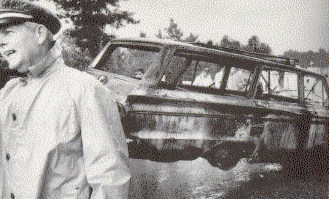
By the next day, June 23, Proctor had been joined by ten newly arrived special agents and Harry Maynor, his New Orleans-based supervisor. The first big break in the FBI investigation, called MIBURN (for "Mississippi Burning"), came when Proctor received a tip that a smoldering car had been seen in northeast Neshoba County. While Proctor was at the scene, searching the area around what turned out to be the burned blue CORE station wagon, he looked up to see Joseph Sullivan , the FBI's Major Case Inspector. It was by then abundantly clear that the Johnson Administration was placing top priority on the case. By June 25, the federal military had joined the search, with busloads of sailors arriving in Neshoba County to beat their way through snake-infested swamps and woods. Days later, FBI Director J. Edgar Hoover would fly to Jackson to announce the opening of the FBI's first office in Mississippi.
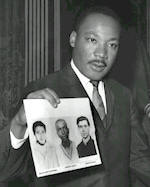
Martin Luther King holding poster showing the three missing civil rights workers
It soon became apparent to Inspector Sullivan the case "would ultimately be solved by conducting an investigation rather than a search." It turned out to be an extraordinarily difficult investigation. Neshoba County residents, many of whom either participated in the conspiracy or knew of it, were tight-lipped. Proctor found that some of his most useful information came from kids, so he would stuff candy in his pockets before setting out for a day's schedule of interviews. A promise of $30,000 in reward money finally brought forward information, passed through an intermediary, concerning the location of the bodies. (Jerry Mitchell, an investigative reporter with Meridian's Clarion Ledger, reported in a 2010 story that highway patrolman Maynard King told Sullivan the location of the bodies. Mitchell also reported that the FBI's promise of a $30,000 reward was made after the FBI learned the location of the bodies and was part of a strategy to increase finger-pointing and suspicion within the Klan.) On August 4, 1964, John Proctor was at the Old Jolly Farm to take photographs of the bodies as they were uncovered at the dam site. Inspector Sullivan invited Price to the dam site to help in the removal of the bodies. Sullivan was interested in observing the reaction of the Deputy, who was by then under heavy suspicion. Proctor noted that "Price picked up a shovel and dug right in, and gave no indication whatsoever that any of it bothered him."

Cecil Price (in Texas hat) helping load bodies found at dam site into an ambulance
Finally it would be informants from within the Klan that would break the case open. The first information, from a Klan member at the periphery of the conspiracy, enabled the FBI to focus on the more central figures. One Klan member who received a great deal of attention from John Proctor was James Jordan, a Meridian speakeasy owner. Over the course of five increasingly rough interviews, Jordan came to see turning state's evidence as his best bet to avoid a long prison term. He was also promised $3500 and help in relocating himself and his family in return for his full story. Jordan would become the government's key witness to the crime.
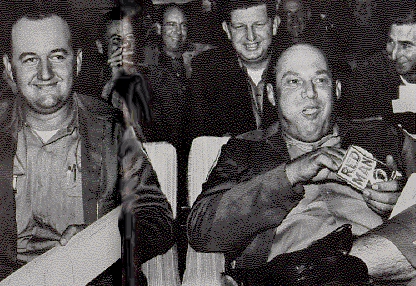
Deputy Cecil Price and Sheriff Lawrence Rainey at their arraignment in December 1964
By December, 1964, the Justice Department had enough information to authorize arrests. On the drizzly morning of December 4, a team of federal agents swept through Neshoba and Lauderdale Counties arresting nineteen men for conspiring to deprive Schwerner, Chaney, and Goodman of their civil rights under color of state law.
Six days later, a U. S. Commissioner dismissed the charges. He concluded that the arrests were based on hearsay evidence. A month later, government attorneys secured indictments against the conspirators from a federal grand jury in Jackson. But again the Justice Department was disappointed.
The defense asked Federal Judge William Harold Cox to throw out the indictments. Judge Cox was as ardent a segregationist as ever sat on the federal bench. Cox owed his job to his friend and Ole Miss Law School roommate, James Eastland, chair of the Senate Judiciary Committee. In 1962, Senator Eastland had been blocking President Kennedy’s appointment of NAACP counsel Thurgood Marshall to the U. S. Court of Appeals. Kennedy wanted Marshall on the court badly, so Eastland proposed a deal. He reportedly told Attorney General Robert Kennedy, “Tell your brother that if he will give me Harold Cox, I will give him the nigger.”
Judge Cox and John Doar, who would prosecute the Mississippi Burning case, knew each other well from earlier voting rights cases brought by the Justice Department.
In fact, Doar had been present when Judge Cox made the most serious mistake of his judicial career. Doar recalled, “I was in his chambers on an application for a temporary injunction. I said to Judge Cox, ‘There’s nothing un-American about blacks wanting to vote.’” Cox responded by describing African-American voter applicants as “a bunch of chimpanzees.” Cox’s statement appeared the next day in a story in the New York Times and led to an impeachment effort that nearly cost Cox his job.
Not surprisingly, then, Judge William Harold Cox threw out the indictments against all conspirators other than Rainey and Price on the ground that the other seventeen were not acting "under color of state law." In March, 1966, the United States Supreme Court overruled Cox and reinstated the indictments [LINK TO SUPREME COURT DECISION].
As the Justice Department prepared for trial, defense attorneys made the cynical argument that the original indictments were flawed because the pool of jurors from which the grand jury was drawn contained insufficient numbers of minorities. Rather than attempt to refute the charge, the government summoned a new grand jury and, on February 28, 1967, won reindictments. The list of those indicted differed slightly from the original list, and included the names of eighteen Klansmen.

The Trial
Trial in the case of United States versus Cecil Price et al. began on October 7, 1967 in the Meridian courtroom of Judge William Cox. Chief Prosecutor John Doar and other government attorneys had reason to be concerned about Cox. Cox, appointed as an effort to appease powerful Judiciary Committee Chairman (and former roommate of Cox at Ole Miss) Senator James Eastland, had been a constant source of problems for Justice Department lawyers (especially John Doar) who were seeking to enforce civil rights laws in Mississippi. In one incident, Judge Cox referred to a group of African Americans set to testify in a voting rights case as "a bunch of chimpanzees."
Across the street from the courthouse, Raymond Roberts, the brother of one of the defendants, planted a large Confederate flag. The flag brought cheers from onlookers. Federal marshals stood on the courthouse steps, hoping to discourage anyone who might think of climbing over the police barricades. Inside the building, a crowd of reporters gathered outside the second-floor courtroom as 200 summoned potential jurors waited for the start of proceedings.
The Klansmen in the dock, and those cheering them on, were well described by James Silver in his book, Mississippi: The Closed Society:
[There is] an anxious, fearful, frustrated group of marginal white men, who exist in every Mississippi community. … They are impelled to keep the Negro down in order to look up to themselves … [They] may not raise their low standard of living by blaming it on Negroes, but they do release an aggressive energy upon a socially accepted scapegoat. Themselves last in everything else, they can still rejoice in having the [Negro] beneath them.
A jury of seven white men and five white women, ranging in ages from 34 to 67, was selected. But selection came only after the Justice Department made an extraordinary effort to ensure that no Klan member slipped onto the jury. Even one would doom the government’s case. Prosecutors also wanted a smart, respectable jury. John Doar told me in an interview, “We were looking for signs of intelligence. I had my guys look at everybody’s homes—we were looking for homes that were well kept up.” As expected, defense attorneys exercised peremptory challenges against every one of seventeen potential black jurors [link to list of jurors]. Defense attorneys exercised peremptory challenges against all seventeen potential black jurors. A white man, who admitted under questioning by Robert Hauberg, the U.S. Attorney for Mississippi, that he had been a member of the KKK "a couple of years ago," was challenged for cause. Judge Cox denied the challenge.

Price and Rainey, seen during trial
One of the twelve defense attorneys pointed at Doar in his opening argument. He told the jury that the government’s lead lawyer was the same despised Justice Department official who “forced the Negro James Meredith into the University of Mississippi.” Doar nodded in confirmation. He had been at Meredith’s side during all of those first, tense days after his registration.
The defense made a huge mistake when it cross-examined one of the government’s background witnesses. The witness was Reverend Charles Johnson, who worked with Schwerner in Meridian. Defense Attorney Laurel Weir launched into a series of outrageous questions about whether Schwerner was an atheist, whether he went to Cuba, and whether he advocated burning draft cards. The series of questions ended when Weir asked whether “You and Mr. Schwerner didn't advocate and try to get young male Negroes to sign statements agreeing to rape a white woman once a week during the hot summer of 1964?”
The question prompted Judge Cox to break in to note that such a question was "highly improper." He asked the defense attorney if he could show a reason for posing it. Weir said the question had been passed to him in writing. Cox demanded to know who wrote it. After an awkward silence, one of the defense attorneys admitted that "Brother Killen,'' defendant Edgar Ray Killen, wrote the question. The incident was important because it made clear to the defendants, and more importantly to the jury, that Judge Cox was taking the trial seriously—and that they should too. Doar called the defense move “a tremendous blunder” and told me when I interviewed him in 1999 that it was “the turning point of the trial.”
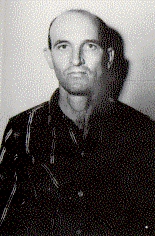
Edgar Killen
The heart of the government's case was presented through the testimony of three Klan informants, Wallace Miller, Delmar Dennis, and James Jordan. Miller described the organization of the Lauderdale klavern and described his conversations with Exalted Cyclops Frank Herndon and Kleagle Edgar Ray Killen about the June 21 operation in Neshoba County. Dennis incriminated Sam Bowers, the founder and Imperial Wizard of the White Knights of the KKK of Mississippi. Dennis quoted Bowers as having said after the killing of Schwerner and the two others, "It was the first time that Christians had planned and carried out the execution of a Jew." It was also through Dennis that the government introduced the contents a letter written by Bowers but pretending to be from an official of a logging company referring to the murders as "the big logging operation" and to the suspects of the FBI investigation as "those deep in the swamp[LINK TO KKK LOGGING LETTER]." At another point in his testimony, Dennis described a Klan meeting in the pasture of Klan member Clayton Lewis. He then pointed to Lewis, the mayor of Philadelphia, sitting at the defense table as a member of the twelve-man defense team. James Jordan was the government's only witness to the actual killings. Fearing a Klan assassination, the government had arranged to have Jordan hustled into court by five agents with guns drawn. After first requiring hospitalization for hyperventilating, and then collapsing and having to be carried from the courtroom on a stretcher, an obviously nervous Jordan finally made it to the witness stand. Jordan described the events of June 21 and the early morning of June 22, from the gathering of Klan members in Meridian to the burial of the bodies at the Old Jolly Farm. His vivid testimony caused one black female spectator to break down and have to be led from the courtroom, sobbing.
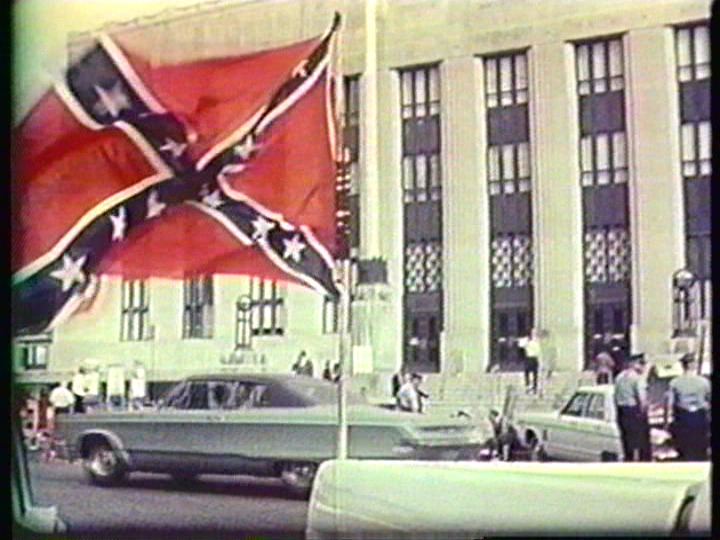
Scene outside Meridian courtroom
The defense case consisted of a series of alibi and character witnesses. Local residents testified as to the "reputation for truth and veracity" of various defendants, or to having seen them on June 21 at locations such as funeral homes or hospitals.
John Doar presented the closing argument for the government on October 18. He used the opportunity to address the question that probably still on many jurors’ mind: “Why is this a federal prosecution?”
Doar told jurors:
I am here because your National Government is concerned about your local law enforcement and in a civilization local law must work if we deserve our liberty and freedom….
When local law enforcement officials become involved as participants in violent crime and use their position, power and authority to accomplish this, there is very little to be hoped for, except with assistance from the Federal Government. But members of the jury, exactly what does that mean? It means that the Federal Government is not invading … Mississippi. It means only that these defendants are tried for a crime under federal law in a Mississippi city, before a Mississippi federal judge, in a Mississippi courtroom before twelve men and women from the State of Mississippi. The sole responsibility of the determination of guilt or innocence of these men remain[s] in the hands where it should remain, the hands of twelve citizens from the State of Mississippi.
Doar told the jury that "this was a calculated, cold-blooded plot. Three men, hardly more than boys were its victims." Pointing at Price, Doar said that "Price used the machinery of law, his office, his power, his authority, his badge, his uniform, his jail, his police car, his police gun, he used them all to take, to hold, to capture and kill." Doar concluded by telling jurors that what he and the other lawyers say here today "will soon be forgotten, but what you twelve do here today will long be remembered."
Doar told the jury that "this was a calculated, cold-blooded plot. Three men, hardly more than boys were its victims." Pointing at Price, Doar said that "Price used the machinery of law, his office, his power, his authority, his badge, his uniform, his jail, his police car, his police gun, he used them all to take, to hold, to capture and kill." Doar concluded by telling jurors that what he and the other lawyers said "will soon be forgotten, but what you twelve do here today will long be remembered."
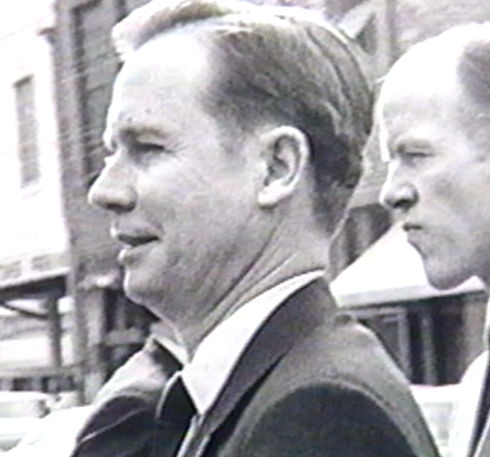
Sam Bowers, defendant and Imperial Wizard of the Mississippi KKK
One day after having begun its deliberations, the jury reported to Judge Cox that it was deeply divided and unable to reach a verdict. Over defense objections, the judge responding by giving the jury what is called the "Allen charge," or the "dynamite charge," for its purpose of breaking open a deadlocked jury. Shortly after Cox gave his charge, defendant Wayne Roberts joked to Cecil Price, "We've got some dynamite for them ourselves." The remark was overheard by a court officer and reported to the judge.
On the morning of October 20, 1967, the jury returned with its verdict. The verdict on its face appears to be the result of a compromise. Seven defendants, mostly from Lauderdale County, were convicted. The list of convicted men included Deputy Sheriff Cecil Price, Imperial Wizard Sam Bowers, trigger man Wayne Roberts, Jimmy Snowden, Billey Wayne Posey, and Horace Barnett. Seven men, mostly from Neshoba County, were acquitted, including Sheriff Lawrence Rainey, burial site owner Olen Burrage, and Exalted Cyclops Frank Herndon. In three cases, including that of Edgar Ray Killen, the jury was unable to reach a verdict [LINK TO ARTICLES ABOUT JURY DELIBERATIONS]. (Charges were dropped against one defendant, Travis Barnette, before deliberations.)
John Doar was satisfied: “To have that jury return that verdict was a great thing.” His only regret was that the jury didn’t reach a verdict on Edgar Ray Killen. Killen “was really central to the conspiracy,” Doar said. The vote for conviction was 11 to 1 for Killen. The hold-out revealed she just couldn’t bring herself to vote to convict a preacher. Killen, of course, was thrilled. Returning home to Philadelphia after the trial, Killen told a neighbor: “Man, I thought they were fittin’ me for overalls over there.”
The convictions in the case represented the first ever convictions in Mississippi for the killing of a civil rights worker. The New York Times called the verdict "a measure of the quiet revolution that is taking place in southern attitudes."
On December 29, Judge Cox imposed sentences. Roberts and Bowers got ten years, Posey and Price got six years, and the other three convicted defendants got four. Cox said of his sentences, "They killed one nigger, one Jew, and a white man-- I gave them all what I thought they deserved."
After serving four years of his six-year sentence, Cecil Price rejoined his family in Philadelphia. In a 1977 New York Times Magazine interview, Price revealed that he recently watched and enjoyed the television show "Roots." His views on integration had changed, he said. "We've got to accept this is the way things are going to be and that's it."
Update (November, 2000):
Mississippi prosecutors are now considering bringing state murder charges against some of the conspirators, including Edgar Ray Killen. Mississippi Attorney General Michael Moore recently explained, "The problem with [the Mississippi Burning] case is that we didn't do anything--we didn't investigate it; we didn't prosecute it." In 1999, the state reopened the investigation. The FBI turned over to the state more than 40,000 files pertaining to the case. One of the problems with bringing charges in the 36-year-old case is that many of the key witnesses that testified in the federal case are now dead. A successful prosecution will most likely require that the state be successful in convincing some of the conspirators to testify for the prosecution. Attorney General Moore sees value in reviving the case: "Maybe by doing this old case, we'll change some of those old stereotypes [about Mississippi]."
Update (May, 2001):
On May 6, 2001, three days after falling from a lift in an equipment rental store, Cecil Price died of head injuries. Price's death was seen by Attorney General Moore as a huge setback to the ongoing investigation of the 1964 case: "If he had been a defendant, he would have been a principal defendant. If he had been a witness, he would have been our best witness. Either way, his death is a tragic blow to our case." Before his death, Price told investigators that, after jailing the three civil rights workers, he called Billy Wayne Posey and asked his to get in touch with Edgar Ray Killen, who then planned the killings.
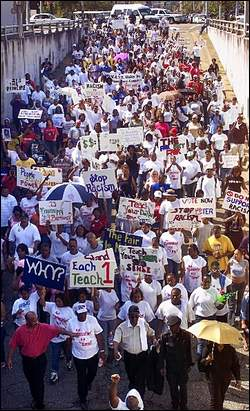

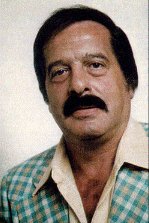
Update (October, 2004):
In the photo to the left, Jackson State University students and others march in downtown Jackson in October 2004 demanding that Attorney General Jim Hood prosecute Edgar Ray Killen, 79, a suspect in the 1964 killings of three civil rights workers.
On October 6, 2004 approximately 500 people marched in support of state prosecution of former Klan preacher Edgar Ray Killen for the murder of James Chaney, Andrew Goodman, and Michael Schwerner. Killen, now 79, escaped conviction in 1967 when a lone juror refused "to convict a preacher." Mississippi Attorney General Jim Hood, asked about the efforts to gain an indictment of Killen, said that he would not be pressured by emotion to reopen the old case. "This is going to be about facts," he said in an interview with Ryan Clark of the Clarion-Ledger. Killen offered no comment about public efforts to gain his conviction.
Update (January 7, 2005):
On January 6, 2005, the State of Mississippi charged 79-year-old former Klan preacher Edgar Ray Killen with murder in connection with the slayings of Chaney, Goodman, and Schwerner. Police arrested Killen at his home following a grand jury session, according to Neshoba County Sheriff Larry Myers. Convicted Klan conspirator Billy Wayne Posey expressed anger at Killen's arrest: "After 40 years to come back and do something like this is ridiculous...like a nightmare." More arrests in the case are expected. Carolyn Goodman, the 89-year-old mother of victim Andrew Goodman was pleased with the news. She hoped the killers would someday be "behind bars and think about what they've done."
Prosecutor John Doar told me in 1999 that the failure of the federal jury in 1967 to convict Killen was his biggest disappointment. Killen "was really central to the conspiracy," Doar said. He believed the jury might have divided on Killen because the evidence against him was more circumstantial that it was for those convicted. When Killen returned home to Philadelphia after the 1967 trial he greeted one of his neighbors by saying, "Man, I thought they were fittin' me for overalls over there [at the trial in Meridian]."
Update (June 13, 2005):
Jury selection opened today in Philadelphia, Mississippi in the murder trial of Edgar Ray Killen. Killen watched the proceedings from a wheelchair he has used since he broke his legs in a tree-cutting accident in March. Security was tight with streets around the courthouse barricaded. Ben Chaney, the brother of murder victim James Chaney, told reporters he found the prosecution encouraging. Other civil rights observers complained, however, that other surviving conspirators, such as Olen Burrage, should be facing charges as well.
Update (June 23, 2005):
Judge Marcus Gordon today sentenced Edgar Ray Killen to serve three 20-year terms, one for each conviction of manslaughter in connection with the deaths of Chaney, Goodman, and Schwerner in 1964. Judge Gordon said in pronouncing sentence, "I have taken into consideration that there are three lives in this case and that the three lives should be absolutely respected." Sentencing followed Killen's conviction earlier in the week. The manslaughter convictions came after nearly three days of jury deliberations. The jury found that there was reasonable doubt as to whether Killen intended that the klansmen kill the civil rights workers, and thus did not return a murder conviction.
Update (November 2007):
Linda Schiro, the ex-girlfriend of former mobster Gregory Scarpa, nicknamed "The Grim Reaper," testifying for the prosecution in a murder case, stated that Scarpa put a gun in the mouth of a Ku Klux Klansman in an effort to gain information about the location of the bodies of Chaney, Schwerner, and Goodman. The ploy worked and the bodies were soon dug up in an earthen dam. Scarpa died in prison in the 1990s.
Schiro's story confirmed reports, coming from confidential FBI sources in 1994, that a frustrated J. Edgar Hoover had turned to the Colombo crime family for help in cracking the "Mississippi Burning" case.
Update (August 2009):
On August 13, Billy Wayne Posey died at age 73. Alejandro Miyar, a spokesperson for the Department of Justice, said that Posey's death does not "alter our cold-case investigation." Four suspects in the 1964 murders remain alive.
Update (March 2013):
On March 15, Owen Burrage died at age 82. Burrage owned the farm on which Goodman, Chaney, and Schwerner were buried under an earthen dam, but was acquitted in the 1967 trial. Days before the killings, Burrage bragged that his 250-foot long dam would make a good burial place for civil rights workers. According to an FBI informant, Burrage told a roomful of KKKers discussing the arrival of the civil rights workers in 1964: "Hell, I've got a dam that will hold a hundred of them." Horace Barnette told the FBI that around midnight after the killings, Burrage was waitng at his farm to direct Klansmen to the dam site. Burrage then went to his trucking company garage to get gasoline that was used to burn the civil rights workers' station wagon. With the death of Burrage, only one of the 18 people originally indicted remains alive. The survivor is Pete Harris, who witnesses say called the Klansman to gather on the night of the murders.
Update (June 2016):
Mississippi Attorney General Hood announced that the Mississippi Burning case was officially closed. What remaining witnesses that were still alive were either unable or unwilling to testify in any additional prosecutions, Attorney General Hood said.
For a more detailed essay on the Mississippi Burning trial, see:
Bending Toward Justice: John Doar and the "Mississippi Burning" Trial
